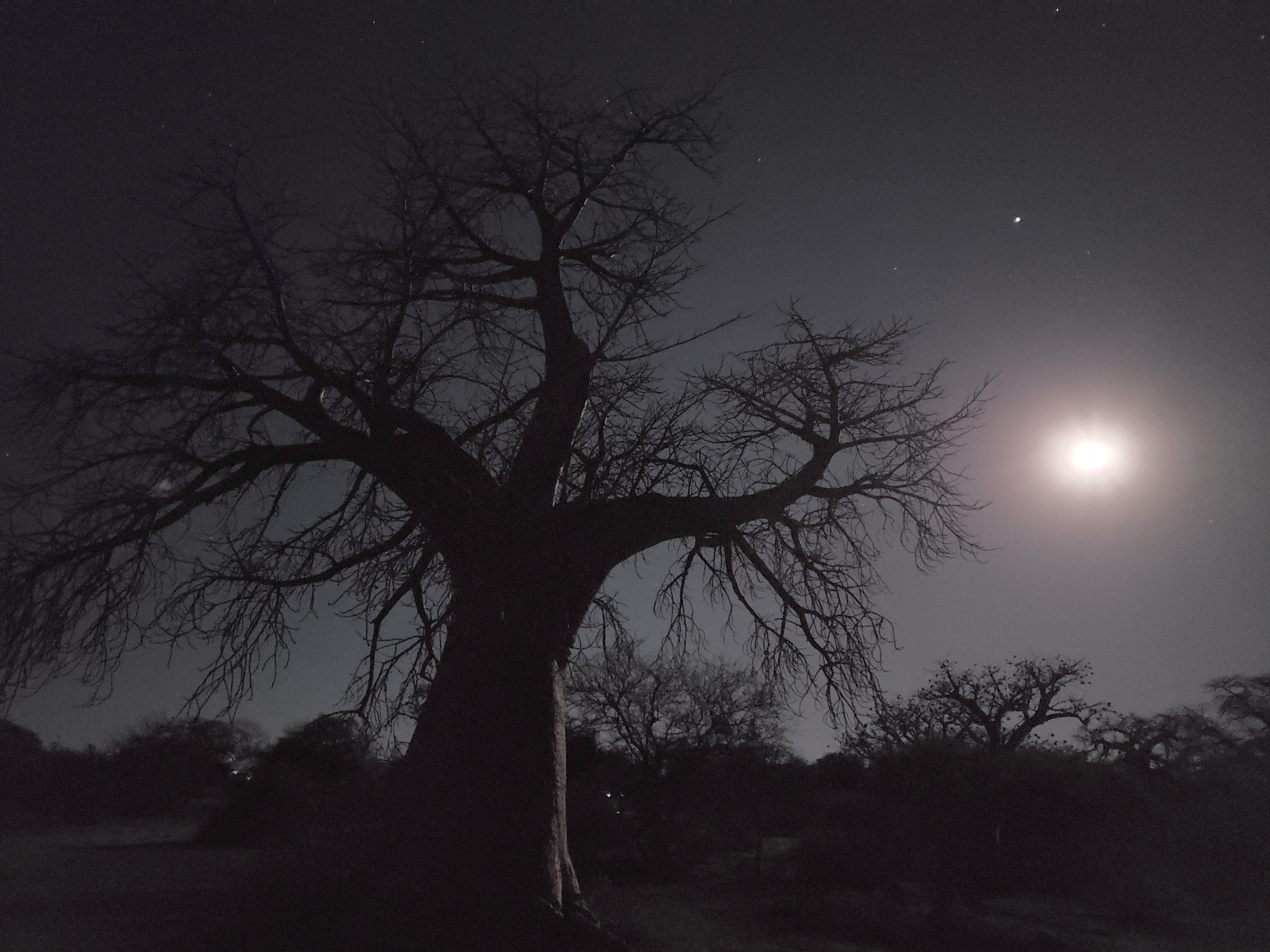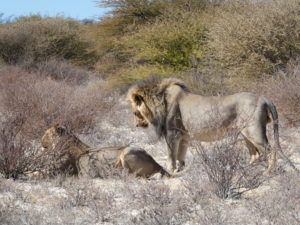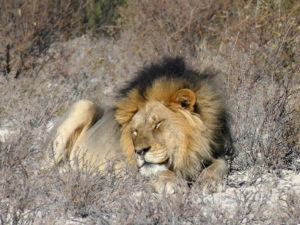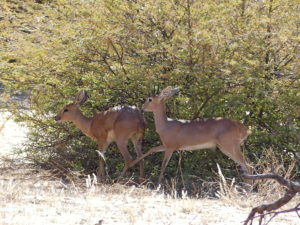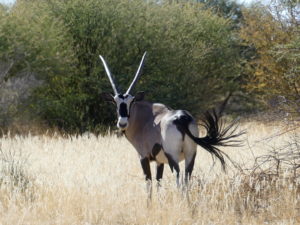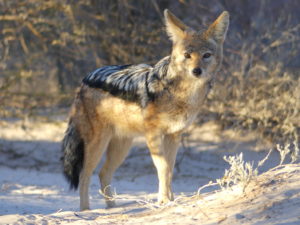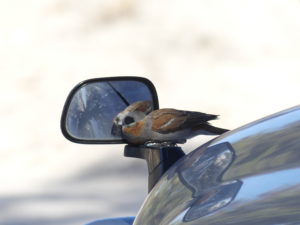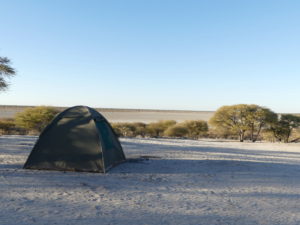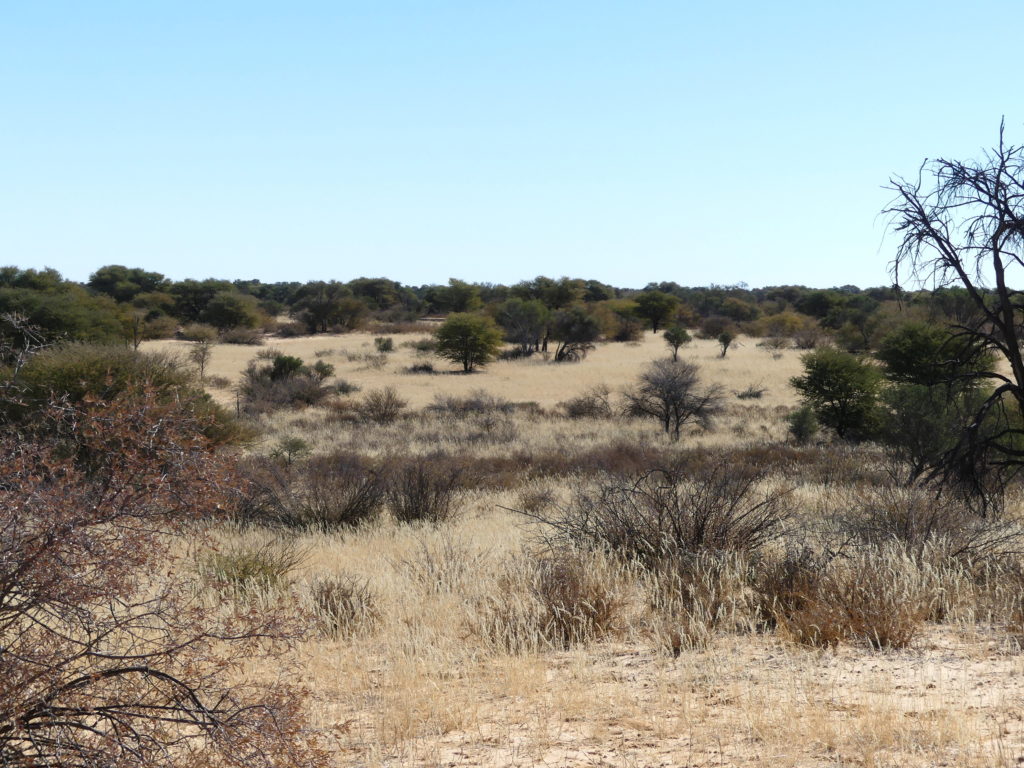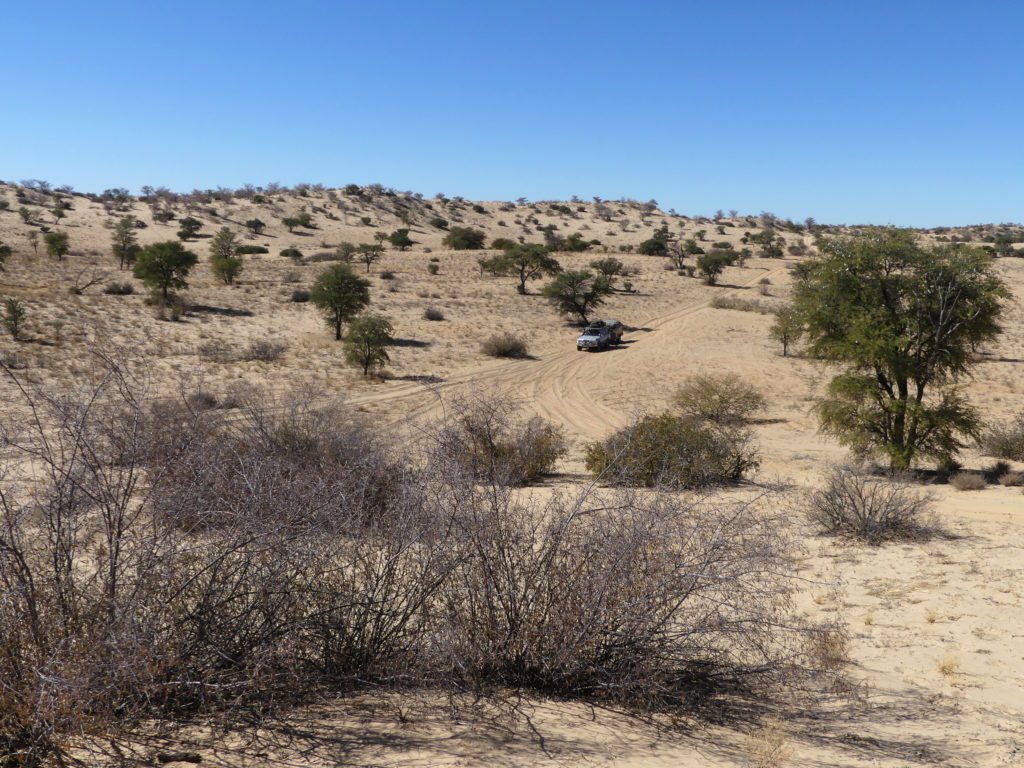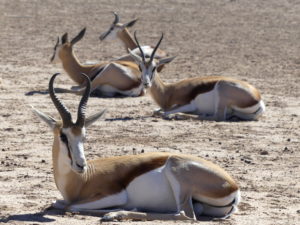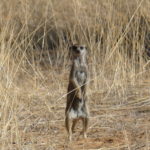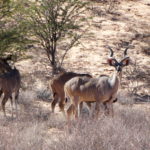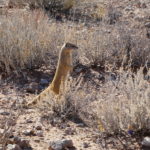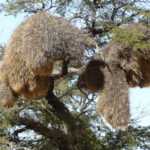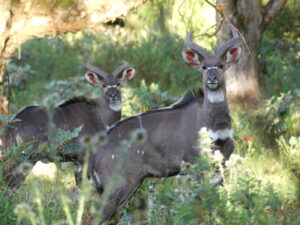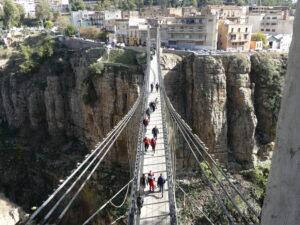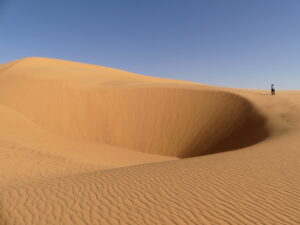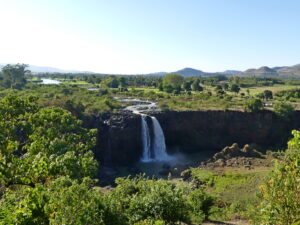The dry – and occasionally water-filled – hollows known as pans are a common feature of the Botswana landscape. Full of life, they summed up our experience in the southern part of the country.
Kgalakgadi Transfrontier Park
The cool mid-day temperatures fell quickly to freezing as a slight crescent moon set, and we packed on layers of clothes for restless sleep in our frigid tent. A simple outhouse, or drop toilet, was close, but not that close. In the morning, it took some time for our hands and feet to warm up.

We were atop a slight hill with a panoramic vista over a dry, sprawling hollow, Jack’s Pan, where water would collect whenever the rains came. And we had driven several hours distance from the nearest person to the edge of Kgalakgadi Transfrontier Park (‘Kg’ is a guttural sound a bit like the German ‘ch’.).
Why were we way out here in the bushveldt?
An absolute quietude throughout the day and night that we could feel. Starry nights where the milky way’s clusters dropped a shower of light into the dark. An unspoiled vista across the distant horizon. And…
Lions in the short grasses nearby, thrumming in the night to signal their pride. A few minutes down the dusty trail, and just a few meters from our car, two of them mated repeatedly under the watchful eye of the male’s brother. To ensure his genes are delivered during her heat, the two mate two or three times per hour over the span of a couple of days. During that time, they don’t hunt or eat. The sexual act takes just a few seconds, but is painful to the lioness so she howls and claws at the male for those moments. Males often show the scars from those couplings. We heard, but did not see, them mate as they discreetly walked a few meters back into brush that hid them.
During all this, the brother lion peacefully ambled toward us from about a half kilometer down the road from the mating pair. We thought he was the more handsome of the two males, but his brother was the chosen one. Though the brother lost out on the right to mate, his vigilance near the sexually active couple helps preserve the genetic line. As it seems, there were no threats for him to deal with.
Love was definitely in the air. These two steenbok antelopes showed us their courting behavior, as the male taps at the female. When not preoccupied with mating, the steenbok typically bounce away rapidly when alarmed or stop like statues to survey a threat.
Across the dry flats, creamy coated oryx antelopes, or gemsbok, plodded by, stopping at intervals to paw the surface for salts to digest. We saw several individuals on the pan, including pregnant ones, and somewhat larger herds later on. Their coloring is dramatic, we thought.
And within our campground black-backed jackals and a half-dozen varied, but imperturbable, birds came to visit. All entertained by us, as we were by them.
The solitary jackals visited our campsite early and late in the day. The same thing happened at our next site in the pans as well. They were no threat to us, but we speculated they might have stayed close as a safety measure against the bossy lions and other predators of the area.
A Great Sparrow provided amusement. It would not stop pecking at his image in the car mirror. We figured the sparrow must realize at some point that the male he saw was not a real challenger, but he just kept at it until dark. Early in the morning, he was back pecking…waking us up much too early in the cold.
Our tent’s lonesome vigil over Jack’s Pan and the Transfrontier park along the distant horizon.
Into the bush
After a few nights, we moved southward from these pans to spend several more days in the main part of the Kgalagadi, a reserve shared by both Botswana and South Africa.
We had diverted from the more famous Kalahari desert of southern Botswana because several travelers had told us that the wildlife was not plentiful there due to the drought conditions.
In the northern part, the terrain consisted mainly of bush-covered sand dunes. We saw a lion atop one ridge and several herds of antelope, but normally – under wetter conditions – we would have seen more.
The “roads” across sand hills and valleys made for a driving challenge. At one location, we needed to try three different road trails consisting of wallowy sand to get over a slight dune hill – and finally made the summit on the third attempt. Fortunately, the other sand ridges were easier to cross.
The travel route within the southern part follows river beds, which are normally dry during the southern African winter…and have remained dry due to the years-long drought. Trees shed huge limbs off their trunks as if they were twigs.
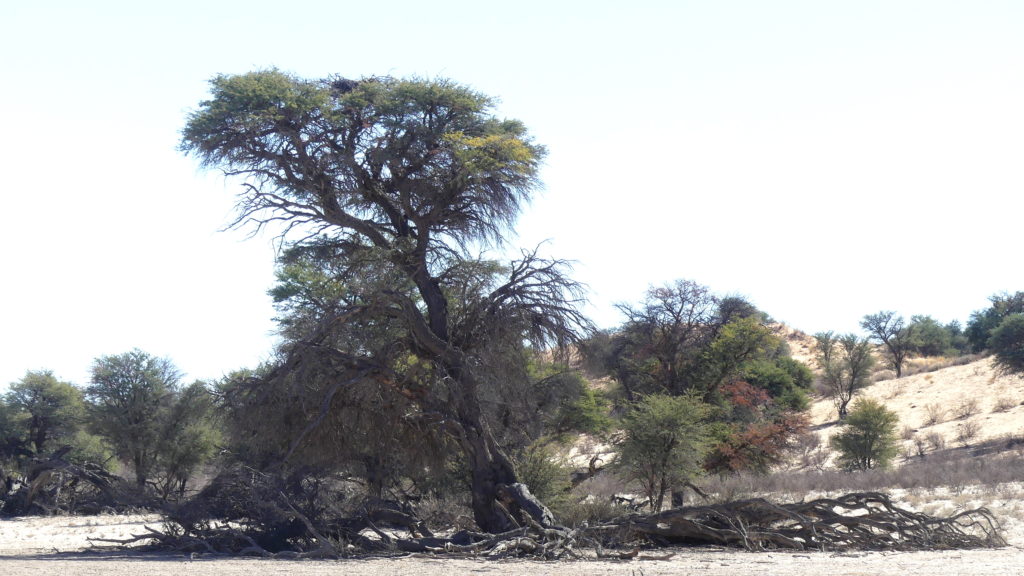
However, at regular intervals, the reserve management has ensured a water supply for the wildlife in these conditions by establishing waterholes at regular intervals. The water is pumped to the surface from below ground by a combination of solar and wind power. The animals we saw at the waterholes – from lions to ostrich to giraffe and antelopes – certainly appreciated the resource, as did we.
Along the dry river of the Kgalakgadi, a herd of springbok rested in the late morning. Earlier or later, we would see straggling herds ambling long distances to reach the supplied waterholes.
Meerkats in the sand dune area…they are just so cute! And they come in bunches too.
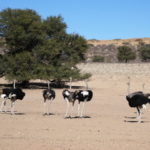
We saw several herds of ostrich within the dry river beds of the Kgalagadi. These had collected near one of the watering holes supplied by the reserve managers.
Kudu antelope on the river bank. The male, with his twisting horns, watches alertly as we pass.
Brown mongoose, on the alert. They may not be as cute as meerkats, but standing erect and scuttling too and fro, they can be just as entertaining.
An aviary co-op apartment dwelling for sociable weavers. With other weaver birds, the males craft intricate individual nests, balls of grass and twigs, so they can attract females. These weaver birds share a communal nest with many exits and entrances.
Makgadikgadi Pans
Back up in central Botswana, north of the Transfrontier Park, the Makgadikgadi “pans” comprise one of the largest salt flats in the world. Parts of it look like the flats we have seen in Bolivia and Chile. But other parts somehow foster bush grass and stubby acacia trees across the long expanse to the horizons.
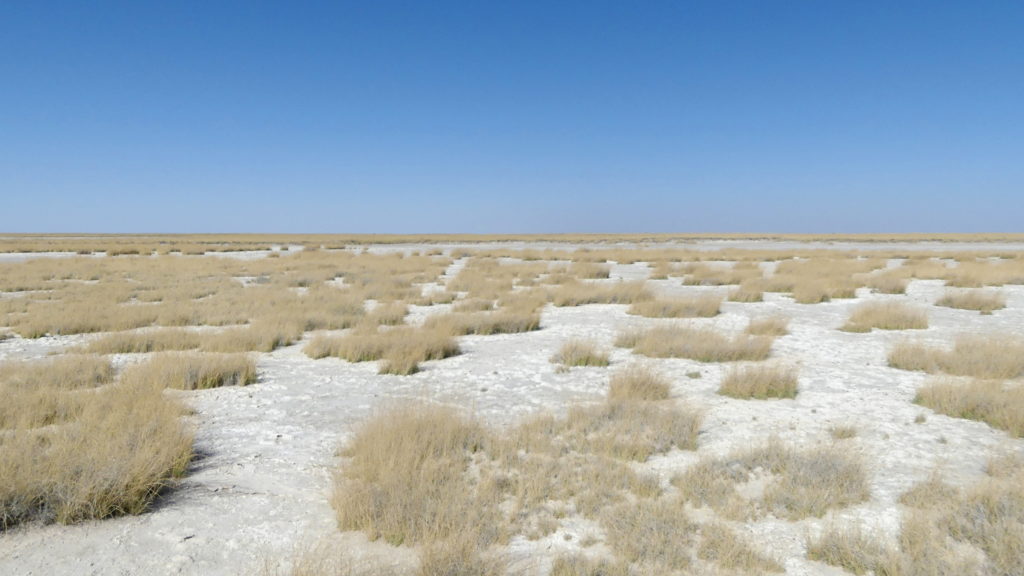
In the midst of all that flatness sits one hump of an island, Lekhubu, from which you can enjoy the stunning sight from dawn to dark.
Surprisingly to us, the island fostered not just rocks but many baobab trees – legendary upside down trees – in unusual configurations, aged sentinels over this extraordinary landscape.
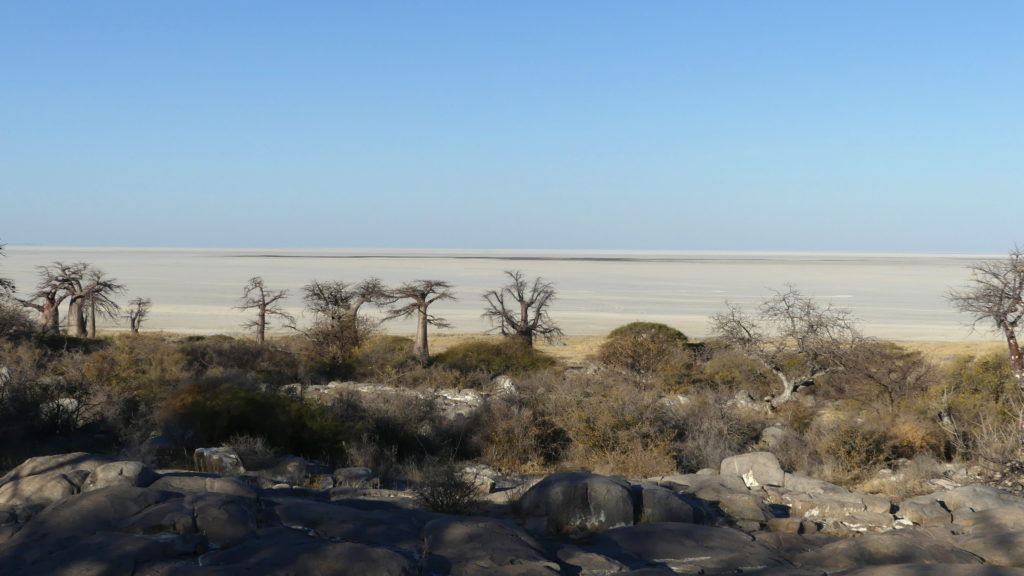
At Barry’s urging in our walk atop the island hump, Nancy claimed Lekhubu Island for our bush home. The stark, flat pan spread to the horizon.
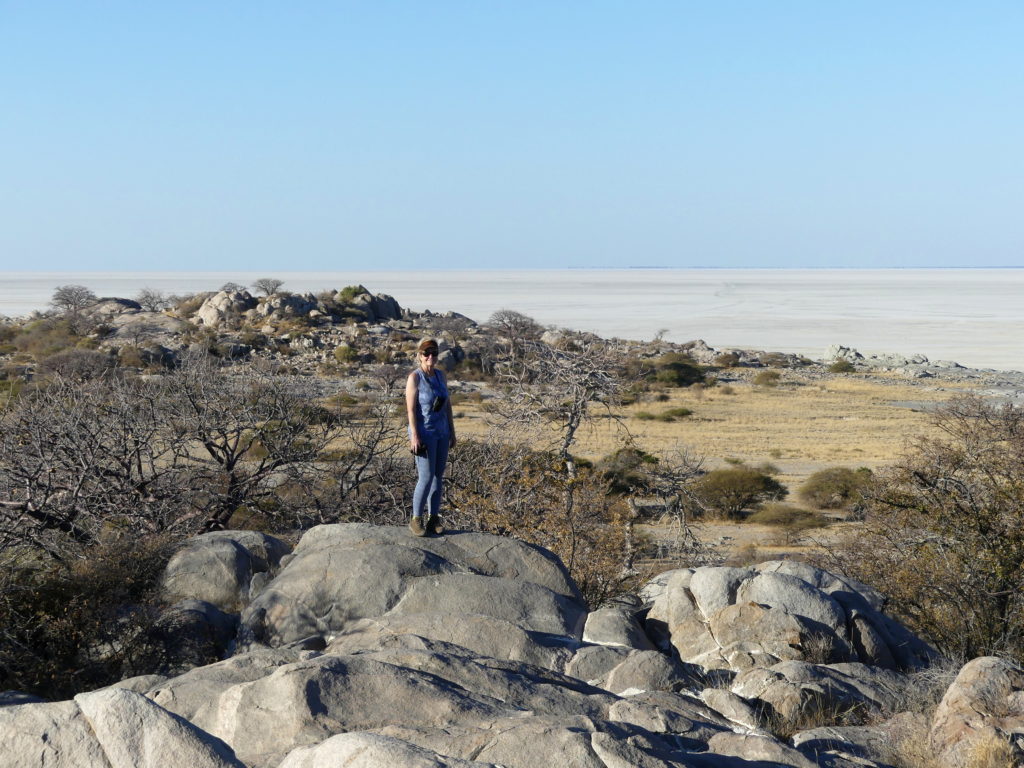
The trip across the flats on slow, sandy, salt-encrusted roads takes hours, and is impassable with even a bit of rain as the salt turns into a mush. Like at Jack’s Pan, there was no water or electricity at the campsites except what we carried with us. Yet, unlike Jack’s quietude, this campground can be quite busy due to the special qualities of the place. The toilets were outhouses, or what they call drop toilets here. But then there’s always the bush toilet.
We camped by this baobab, set against the full moonlight.
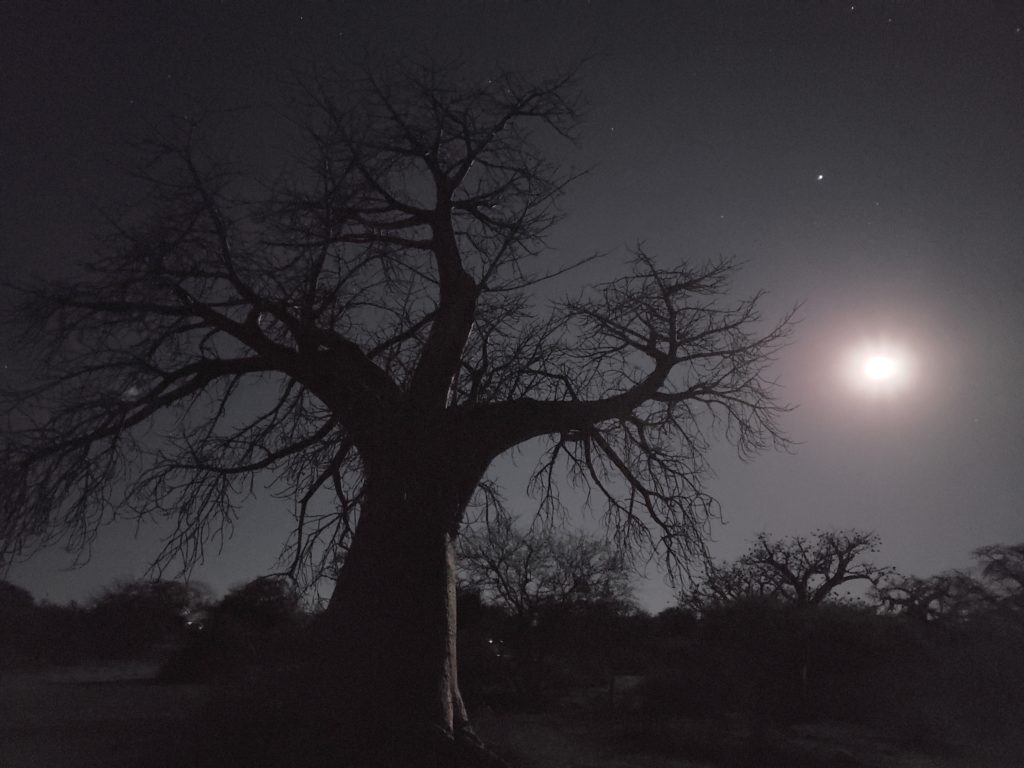
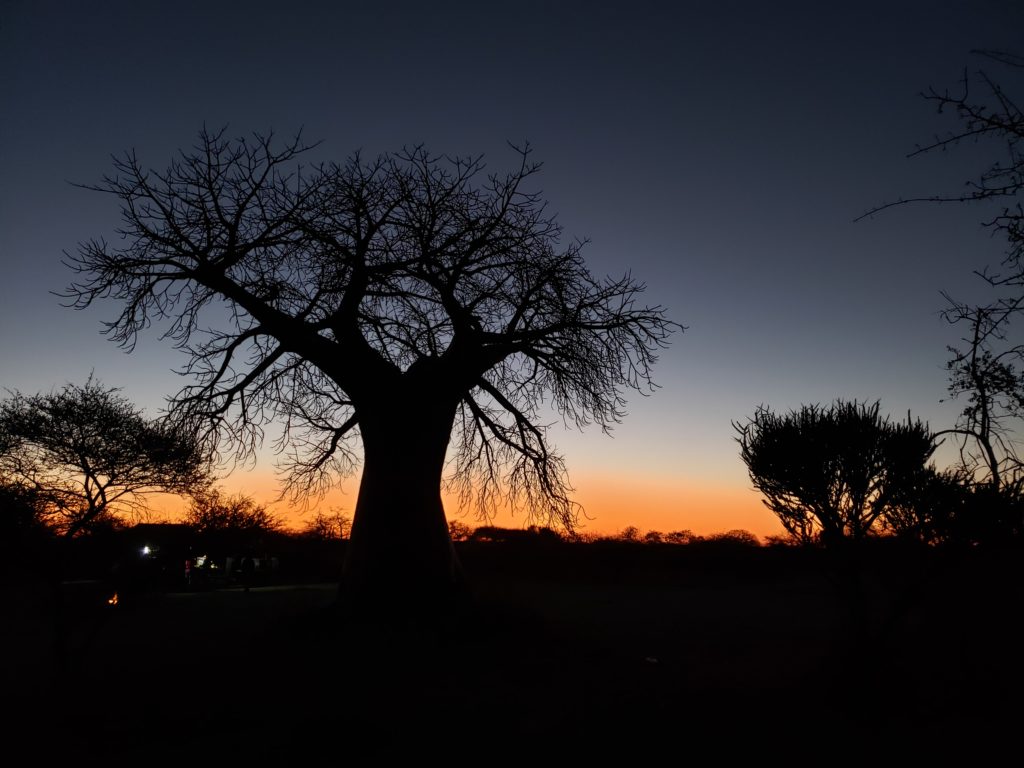
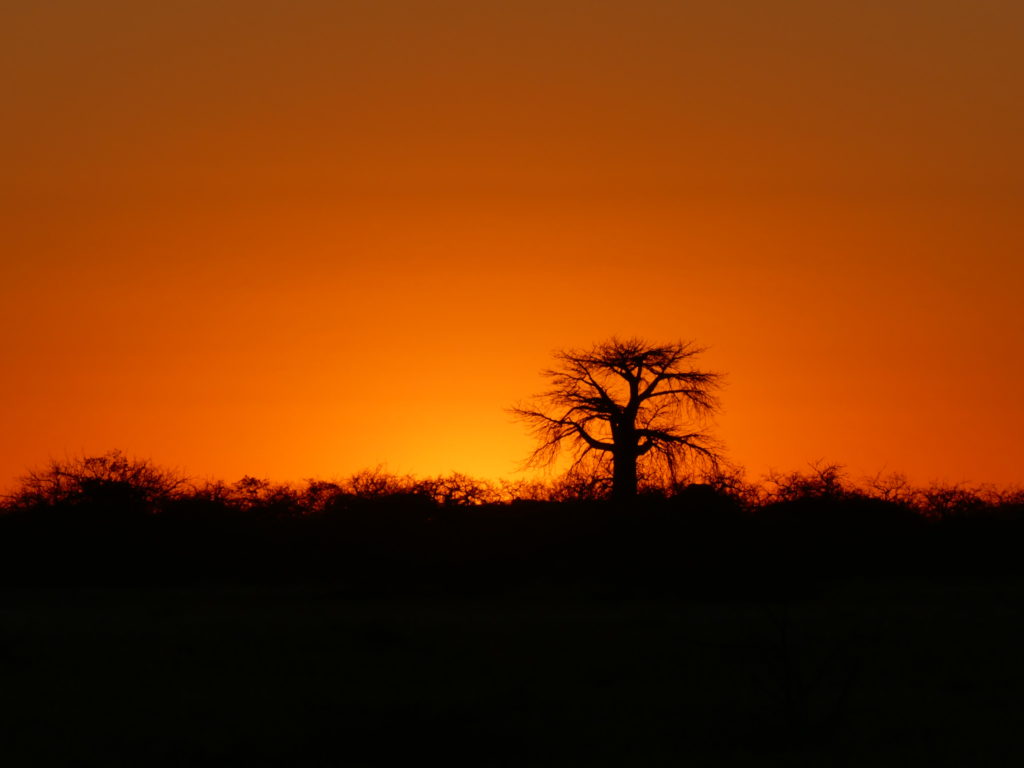
(Also, for more pictures from Botswana, CLICK HERE to view the slideshow at the end of the itinerary page.)


